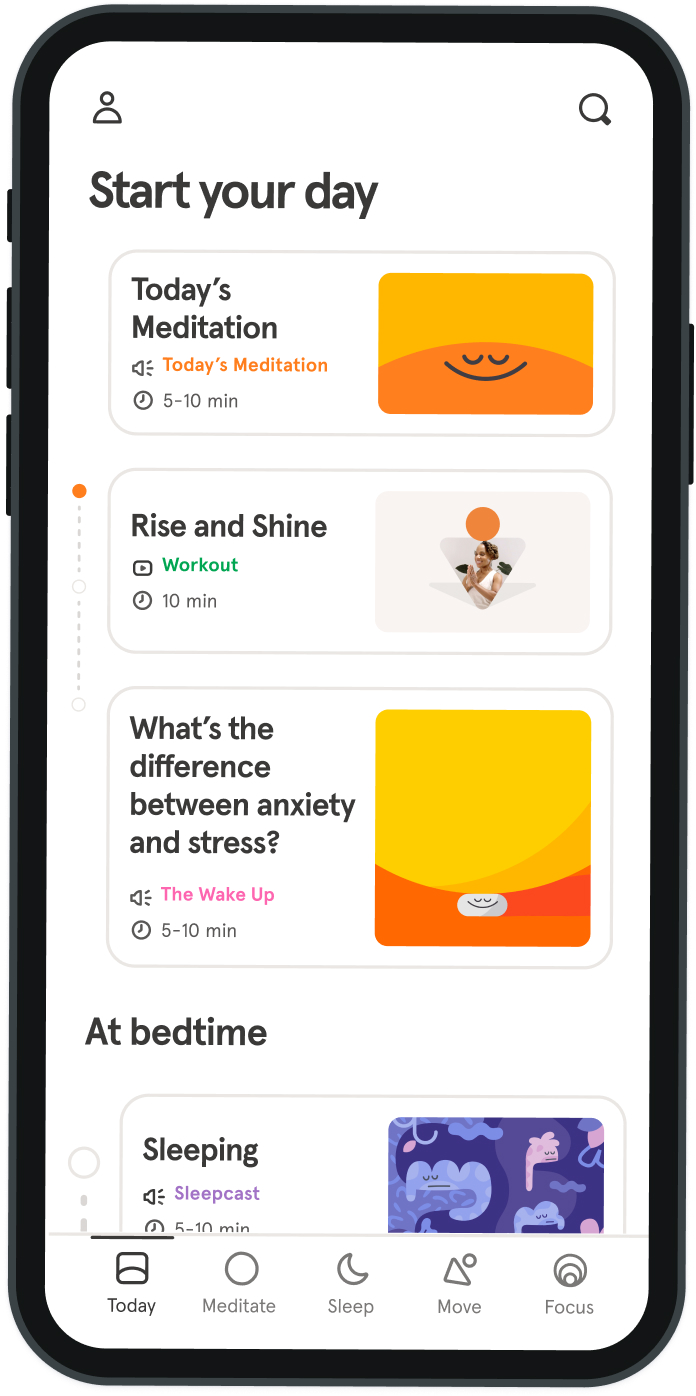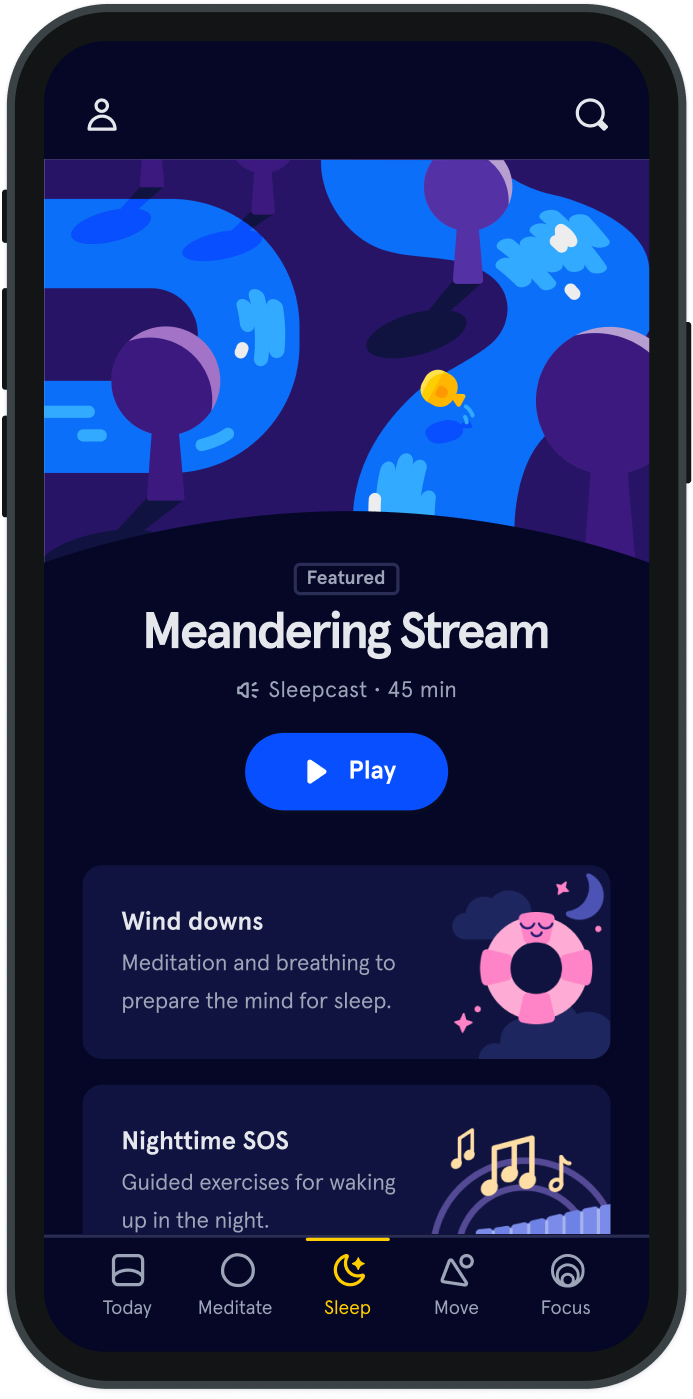A Day With: Seasonal Affective Disorder
[Editor’s Note: This piece is part of an ongoing series of personal essays on what it’s like to live with a mental health diagnosis. Each piece describes a singular and unique experience. These essays are not meant to be representative of every diagnosis, but to give us a peek into one person's mind so we may be more empathetic to all.]
It's still dark out, why'd the alarm go off? Without adequate sun to draw the line between day and night, the concept of morning cracks like an egg on my head, veiling my eyes and dripping off my chin into a well of apathy.
The novelty of the winter holidays provides a welcome distraction, so my SAD doesn’t really kick in until January. I spend each day going through the motions, a beleaguered ghost operating the machinery. I suppose it’s a good thing, to be forced to go through the motions—it keeps me from being swallowed whole. Each daily task becomes perfunctory, driven by a clock in lieu of any sort of inclination or motivation until it tells me I can lay down again. Home. I just want to be home and in bed. Until I don’t. Then, I really don’t. February is when my SAD is in full-force, or so my husband says. Active, social, and positive to the point of near Pollyanna-dom in spring, summer, and fall, I transform into a different person. I might burst into tears if I hear “Summer Breeze” by Seals and Crofts or see an ad for California tourism because I’m overwhelmed by sadness and envy. I find myself snapping at someone in my household, usually over whether or not we should leave the house. Overwhelmed with frustration that I cannot manage to escape my self-imposed exile and lead a normal existence in more savory conditions, the tiniest things set me off, like the fifteen layers I’ve had to put on just to walk the dog. Of course, it’s not their fault I’ve holed up, or that mother nature has seen fit to ground me like a naughty teenager. “Why don’t you just go away?” people often ask after I tell them I have SAD. “You know, go somewhere warm?” “You paying?” is my reply. “Why don’t you get one of those special lamps?” is another question I often hear. Dear friends who also suffer from SAD claim they work like a champ, but the only lamp I want is one I could rub to summon a genie who’ll get me out of this inhospitable freezer of a town.
The novelty of the winter holidays provides a welcome distraction, so my SAD doesn’t really kick in until January. I spend each day going through the motions, a beleaguered ghost operating the machinery. I suppose it’s a good thing, to be forced to go through the motions—it keeps me from being swallowed whole. Each daily task becomes perfunctory, driven by a clock in lieu of any sort of inclination or motivation until it tells me I can lay down again. Home. I just want to be home and in bed. Until I don’t. Then, I really don’t. February is when my SAD is in full-force, or so my husband says. Active, social, and positive to the point of near Pollyanna-dom in spring, summer, and fall, I transform into a different person. I might burst into tears if I hear “Summer Breeze” by Seals and Crofts or see an ad for California tourism because I’m overwhelmed by sadness and envy. I find myself snapping at someone in my household, usually over whether or not we should leave the house. Overwhelmed with frustration that I cannot manage to escape my self-imposed exile and lead a normal existence in more savory conditions, the tiniest things set me off, like the fifteen layers I’ve had to put on just to walk the dog. Of course, it’s not their fault I’ve holed up, or that mother nature has seen fit to ground me like a naughty teenager. “Why don’t you just go away?” people often ask after I tell them I have SAD. “You know, go somewhere warm?” “You paying?” is my reply. “Why don’t you get one of those special lamps?” is another question I often hear. Dear friends who also suffer from SAD claim they work like a champ, but the only lamp I want is one I could rub to summon a genie who’ll get me out of this inhospitable freezer of a town.
It’s time to get up, but I can't muster the energy for anything. Even a perfunctory activity as mundane as dressing for the weather feels arduous, cumbersome, and time-consuming, so the everyday activities I zealously leap toward during summer are avoided completely whenever possible in favor of the confines of my four walls. Seasonal Affective Disorder, or SAD, feels just like it sounds. In rudimentary terms, I have a form of depression that rises and falls with the temperature and exposure to daylight. My treatment requires going outside to absorb as much sunlight as I can possibly get—the thing I want least to do—in an effort to melt the icy overhang of gloom in my brain. I have children, so there’s little allowance for emotional self-indulgence. When the alarm sounds, I am ripped from the comfort of my womb-like bed by the requirements of caring for others. I’m in charge of feeding the kids, walking them to and from school, and also walking the dog three times daily. I force myself to get up, put on a smile, and do these things, but it feels as if I have anvils strapped to my ankles. My mood isn’t quite so heinous afterward, thanks to endorphins and what not. Endorphins and coffee. Then, more coffee. Then, more.
One February some years back, my primary care physician prescribed antidepressants after I burst into tears in his office, frustrated by my misery. A poor fit for my brain chemistry, that solution wasn’t quite right. Instead, I walk the dog and gobble up Vitamin D and L-Theanine supplements, which are said to decrease stress and increase dopamine and serotonin (neurotransmitters in the brain that boost your mood). As a result, I’m a little better. It’s mid-January and I’ve only cried twice. The older I get, the more time passes as if it’s elapsed and as such, when my mood tanks each year, I remind myself that all things must pass—including the travesty that is winter. Last year, a study published in Clinical Psychological Science questioned the validity of SAD, citing erratic survey findings among depressed peoples across geographies with little sunlight. I’m never one to balk at science, but these blues sure feel real to me. Where I live, March is moist and runs the gamut between seasons, vacillating wildly between winter and spring. Each day is a toss-up: it might snow three feet or be a balmy 70 degrees. Whatever the weather, my mood begins to lift like a fog and come my birthday in early April, I’m glad to have hung on long enough to embrace the sun.


Be kind to your mind
- Access the full library of 500+ meditations on everything from stress, to resilience, to compassion
- Put your mind to bed with sleep sounds, music, and wind-down exercises
- Make mindfulness a part of your daily routine with tension-releasing workouts, relaxing yoga, Focus music playlists, and more
Meditation and mindfulness for any mind, any mood, any goal

Stay in the loop
Be the first to get updates on our latest content, special offers, and new features.
By signing up, you’re agreeing to receive marketing emails from Headspace. You can unsubscribe at any time. For more details, check out our Privacy Policy.
- © 2025 Headspace Inc.
- Terms & conditions
- Privacy policy
- Consumer Health Data
- Your privacy choices
- CA Privacy Notice
